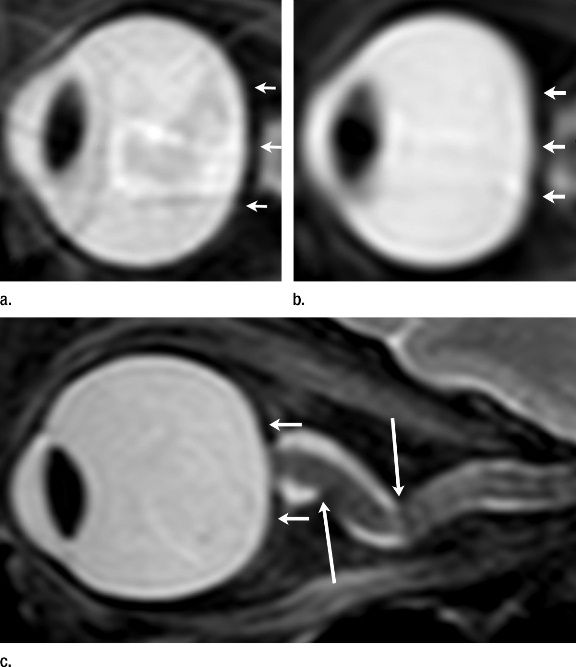MRI Shows Some Astronauts Experience Brain and Eye Abnormalities
MRI findings show that astronauts exposed to zero gravity for prolonged periods can develop brain and eye abnormalities.
MRI findings show that astronauts exposed to zero gravity for prolonged periods can develop brain and eye abnormalities, according to a recent study in the journal Radiology.
Researchers from the University of Texas Medical School at Houston examined 27 astronauts who participated in space shuttle or space station missions that lasted an average of 108 days. Eight astronauts who returned to space for a second mission for and additional average of 39 days underwent repeat imaging upon their return.
Looking for changes in the astronauts’ intracranial and intraorbital spaces, the researchers performed 3-T MR imaging with use of thin-section, 3-dimensional, axial T2-weighted orbital and conventional brain sequences. The optic nerve sheath (ONSD) and optic nerve diameter (OND) were quantified in the retrolaminar optic nerve. OND and central optic nerve T2 hyperintensity were quantified at mid orbit.
Qualitative analysis of the optic nerve sheath, optic disc, posterior globe, and pituitary gland morphology were also performed.
The MRIs showed findings among the astronauts that were similar to those found in patients who have intracranial hypertension that has no known cause for the increased pressure around the brain. In these patients, pressure is put on the juncture between the optic nerve and the eyeball, which can result in visual problems.
Among the astronauts who had more than 30 days of cumulative lifetime exposure to microgravity, nine (33 percent) experienced expansion of the cerebrospinal fluid space and the optic nerve; six (22 percent) had flattening of the rear of the eyeball; four (15 percent) experienced bulging of the optic nerve; and three (11 percent) showed changes in the pituitary gland and its connection to the brain.
None of these findings were conclusive of intracranial pressure, and they did not result in any astronaut being grounded.
In response to the findings, Larry A. Kramer, MD, professor of diagnostic and interventional imaging at the university, and lead author said, “Microgravity-induced intracranial hypertension represents a hypothetical risk factor and potential limitation to long-duration space travel.” This issue has is now added to other known potential problems to human health from space travel, and NASA will continue this line of study.

Sagittal oblique T2-weighted MR images. (a) Image of left eye before long-term exposure to microgravity. Note convexity of posterior globe (arrows). (b) Image of left eye after long-term exposure to microgravity. Note loss of convexity of the posterior scleral margin (arrows). (c) Image of right eye of different astronaut. Note two abruptly angulated foci (long arrows) in optic nerve sheath and posterior globe flattening (short arrows). Images courtesy Radiological Society of North America.
Study: Monitoring of Prostate MRI Exams Could Lead to 75 Percent Reduction of Gadolinium Contrast
March 17th 2025While DCE MRI was deemed helpful in over 67 percent of cases in which it was used, researchers found that monitored prostate MRI exams, which facilitated a 75 percent reduction of DCE MRI sequences, had comparable sensitivity for prostate cancer as non-monitored exams.